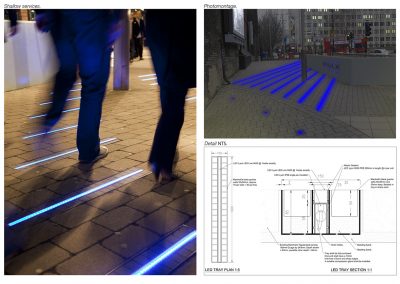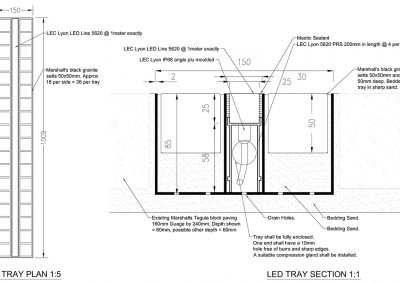
Waterloo Bus Station, London
LED Intuitive Wayfinding
In-ground feature lighting strips
This separate sub-project was born out of the detailed spacial and pedestrian comfort assessments associated with the Light at The End of the Tunnel project, which focussed on improving pedestrian experiences in and around local Victorian viaduct infrastructure. While presenting the assessments, Ludwig’s outline ‘Intuitive Wayfinding’ lighting proposal caught the eye of the TFL client who funded it as a seperate sub-project to work in concert with new Legible London wayfinding infrastructure to improve the legibility of local pedestrian routes and reduced the reliance on the unpopular 1960’s below ground pedestrian network that links Waterloo to the IMAX cinema. Ludwig was employed by SNC Lavalin Atkins as public realm specialist to deliver this project for Transport for London and LB Lambeth.
Year(s)
2006
Project
Waterloo Bus Station
LED Intuitive Wayfinding
Role
Lead Landscape Architect and Public Realm Specialist
Client(s)
London Borough of Lambeth in partnership with Transport for London
Scope
Public Realm Design: Landscape Institute Stages A-L
Installation Watching Brief
Project Bio
In-ground LED light strips have been employed to highlight a location where several pedestrian choices are made, namely at the stair access to the underground network that connects the Imax Cinema to the bus interchange. The ground situation in this specific location is littered with services at only approximately 100mm deep. Close working with the lighting manufacturer was required to develop product strata shallow enough to be housed in bespoke trays above the services. This method of installation enables service providers to access conduits and accurately replace the lighting units without revenue implications for the local authority. This methodology has been adopted by the local authority and TFL / London Underground for similar works on public land at Brixton Forecourt, also led by Ludwig Tewksbury as part of the SNC Lavalin team.

